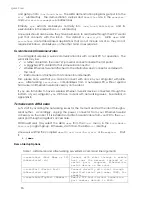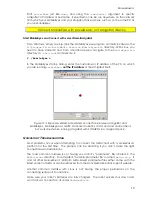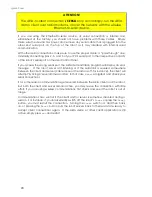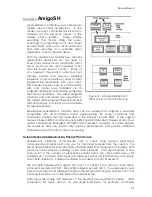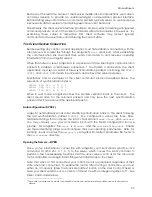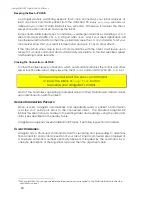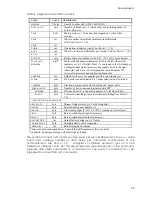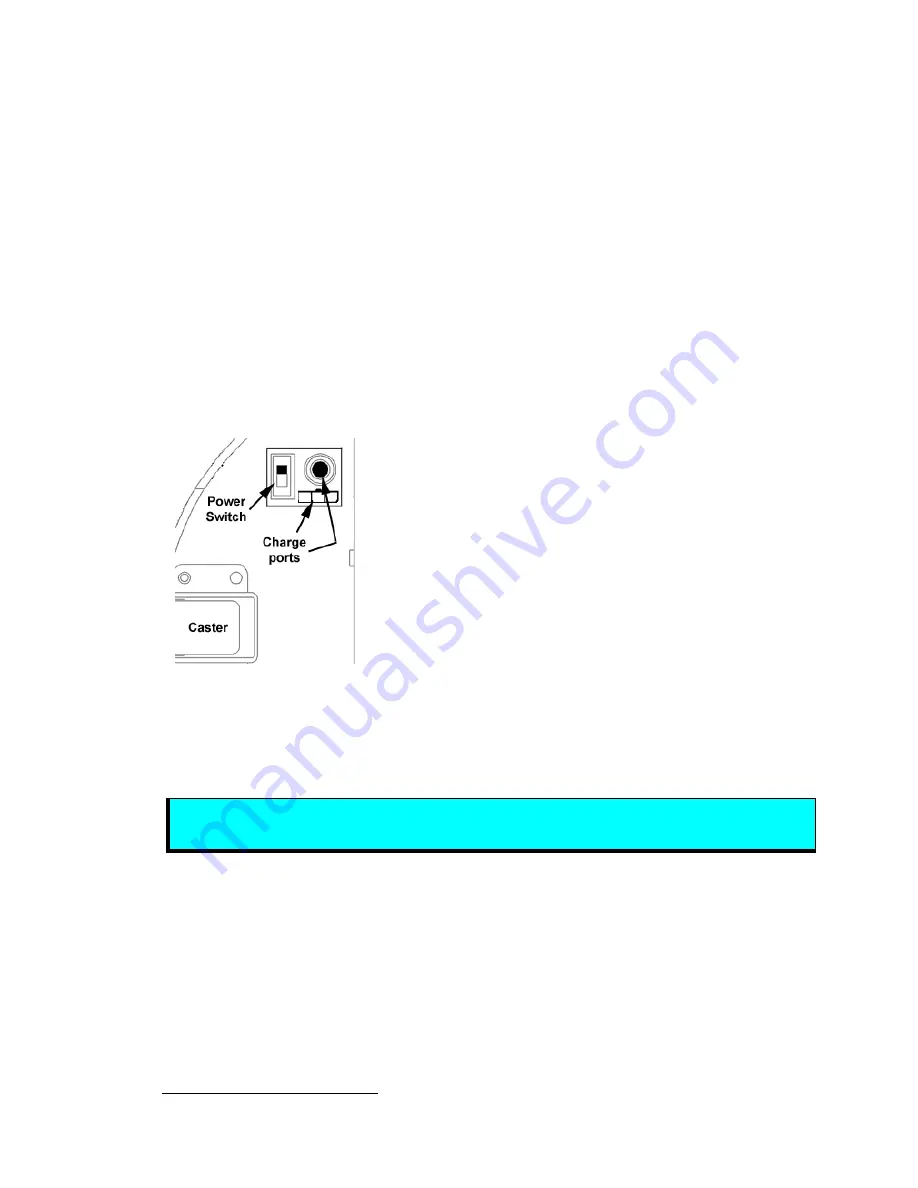
M
OBILE
R
OBOTS
Attached to each drive axle is a high-resolution optical quadrature shaft encoder that
provides 123 ticks-per-millimeter of wheel rotation for precise position and speed sensing
and advanced dead-reckoning.
The AmigoBot drive and sensor systems are powered and processed from a single
controller, driven by a high-performance, I/O-rich Renesas SH2 microprocessor. The
resident operating system (AmigoSH) has 16K RAM and 128K FLASH on-chip memory to
work with.
P
OWER AND
C
HARGING
A single slide-switch on the bottom of AmigoBot near the caster controls power to the
entire robot and all of its integrated accessories. A red LED on the top towards the rear
of the robot is lit when the AmigoBot has power.
The standard AmigoBot comes with a pair of 12 VDC sealed lead/acid batteries for a
total of 4.6 ampere-hours (55.2 watt-hours)—more than ample power for its drives,
electronics, and accessories. Under typical operation with continuous motor activity, the
battery provides over 3 hours of service.
Use the recommended accessory 12 VDC charger or
equivalent and plug into the round charge port to
recharge the lead-acid batteiesy and to power your
AmigoBot.
All the recommended chargers have
sufficient power to run your AmigoBot’s controller as well
as charge the internal batteries, so you need not turn off
power.
Figure 11. AmigoBot's power
switch and charge ports
You should maintain AmigoBot’s batteries in a charged
state above 11 VDC. We recommend recharging the
battery when it falls below 11.7 VDC (
lowbattery
FLASH
parameter), even though the robot may continue to
operate below 11 VDC. The controller will sound a
warning when the battery voltage falls below that
programmed level and will automatically shut down the
motors and any active client-server connection when
the battery voltage falls below a
ShutdownVolts
FLASH
parameter’s value so to avoid damage.
See Chapter 5,
Updating and Reconfiguring AmigoSH
for additional details.
Disengage the motors when recharging AmigoBot,
but you may continue operating the robot.
Typical recharge time depends on the charger and the discharge state of the battery.
The AmigoBot’s standard charger (800 milliampere two-state fast charger) recharges the
lead-acid battery in 2-4 hours. You may continue to operate AmigoBot while charging its
batteries, although that will lengthen the recharge time.
U
SER
I
NDICATORS AND
C
ONTROLS
On top, near the back of AmigoBot next to the red power LED, are two pushbutton
switches and two additional LEDs. The red pushbutton switch is the
Reset
button. Press it
at any time to reset the AmigoBot controller to its power start-up state—motors
disengaged and not connected with a client.
11
4
The three-position charge port is for future battery styles and requisite charger.




















